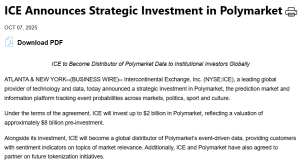Quantum computing isn’t the doomsday machine some claim it to be, but it’s not irrelevant either.
It’s better to think of it as a technological milestone that will reshape how we think about security, privacy, and trust in the financial system.
Rather than asking whether blockchains and digital ledgers can survive the quantum era, a better question is: how will they evolve? Which blockchains are best suited to adapt? And how can we prepare ahead of time?
From encryption to evolution
Quantum computers harness two principles of quantum physics, superposition and entanglement, to perform parallel computations that classical computers can’t.
In practice, that means certain mathematical problems could one day be solved exponentially faster.
These are the same problems that underpin modern encryption and digital signatures. So, yes, quantum computing represents a shift in the security model. However, that doesn’t mean blockchain is obsolete or that there are no ways to defend against it.
Just as we transitioned from DES to AES, and from SHA-1 to SHA-256, we’ll transition again. The technology stack will adapt, but certain chains and ledgers are better equipped than others to do so. The task now is identifying and building on them rather than giving in to fearmongering.
The post-quantum playbook
The next phase of cybersecurity is already underway. The United States National Institute of Standards and Technology (NIST) has finalized new post-quantum standards, including:
- CRYSTALS-Kyber (FIPS 203) for key encapsulation.
- CRYSTALS-Dilithium (FIPS 204) for digital signatures.
- SPHINCS+ (FIPS 205) as a hash-based backup.
These algorithms are being implemented into TLS, HTTPS, and email protocols. They’re the foundation of a world where quantum and classical systems will coexist.
The question is how fast the financial stack, from banks to blockchains, can integrate them.
What it means for blockchains
For many blockchain networks, upgrading cryptography won’t be trivial.
Systems that rely on ECDSA or RSA would require hard forks to adopt new signature schemes. That’s not just a technical task, but as history has shown, it’s also a political one.
However, some blockchains are already prepared for cryptographic evolution.
For example, on BSV blockchain, transactions are processed at the script level, allowing new signature schemes to be added without disrupting the protocol.
Developers can embed lattice-based or hash-based signatures directly alongside existing ECDSA ones, enabling a smooth, gradual transition rather than a game-changing upgrade.
Blockchains that can scale without block-size limits will have a clear advantage, since post-quantum signatures are significantly larger.
Preparing the financial stack
Quantum computing isn’t just a blockchain issue; it affects every digital signature, every certificate, every secure communication in the financial system.
Global banks, exchanges, and central banks are already testing hybrid encryption models that combine classical and quantum-safe algorithms.
Tokenized real-world assets (RWAs), stablecoins, and central bank digital currencies (CBDCs) will follow the same path: they’ll live on cryptography-agnostic systems capable of swapping in stronger primitives as standards mature.
Eventually, post-quantum security will be seen as a baseline feature, not a future patch.
A resilient foundation for the quantum age
Boston Consulting Group (BCG) projects that, by 2030, nearly $19 trillion in RWAs could be tokenized on distributed ledgers.
Those ledgers will form the backbone of global finance. Ensuring their security means embracing change, not fearing it.
Quantum computing will challenge today’s systems, but it will also drive a new wave of innovation in which the digital economy becomes more adaptable, more transparent, and ultimately, more secure.
The future of finance isn’t post-quantum versus blockchains; it’s post-quantum blockchain tech where security evolves at the same pace as computation.
Watch: Blockchain could revolutionize cybersecurity
Source: https://coingeek.com/beyond-quantum-threat-building-the-next-era-of-digital-finance/


